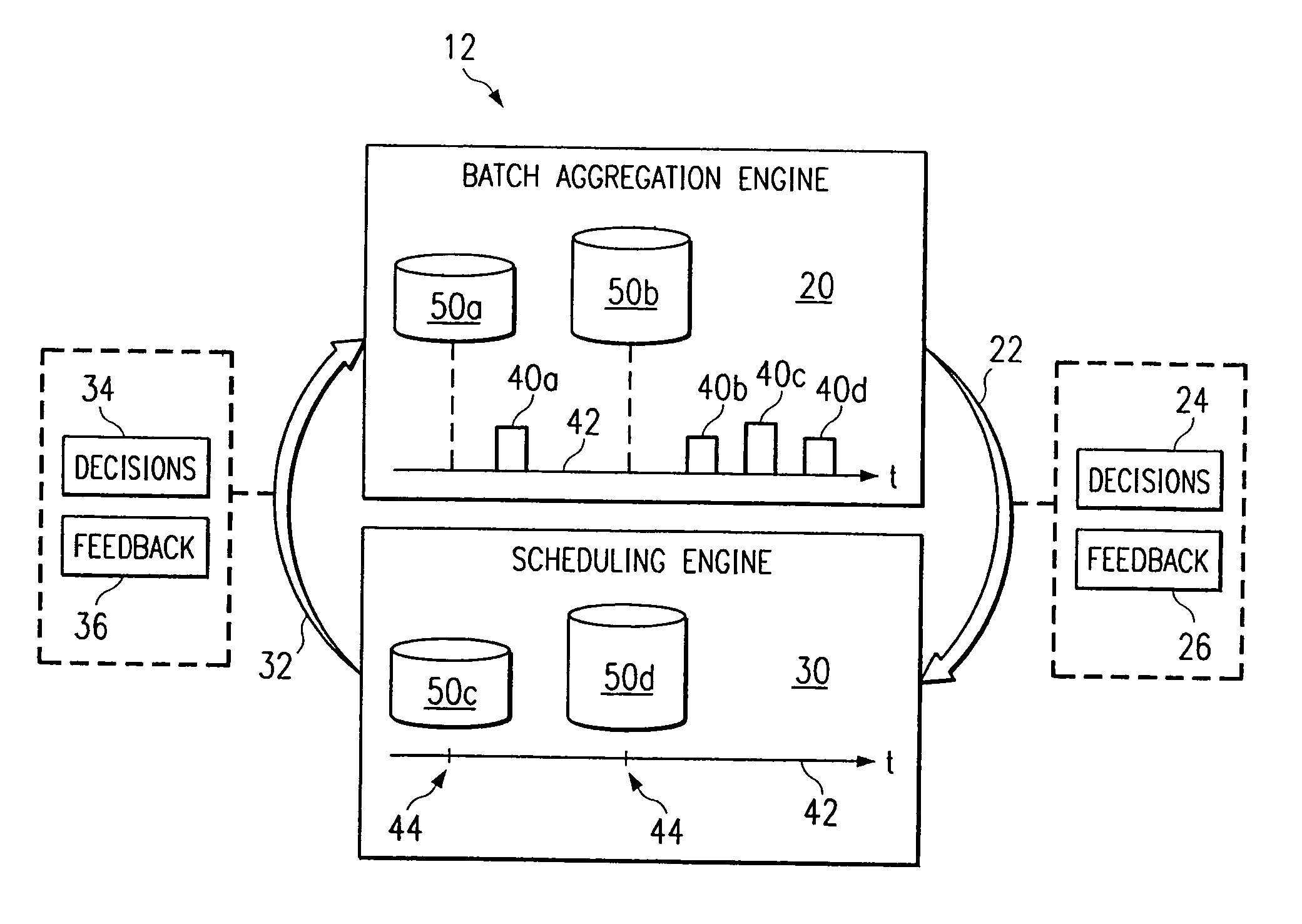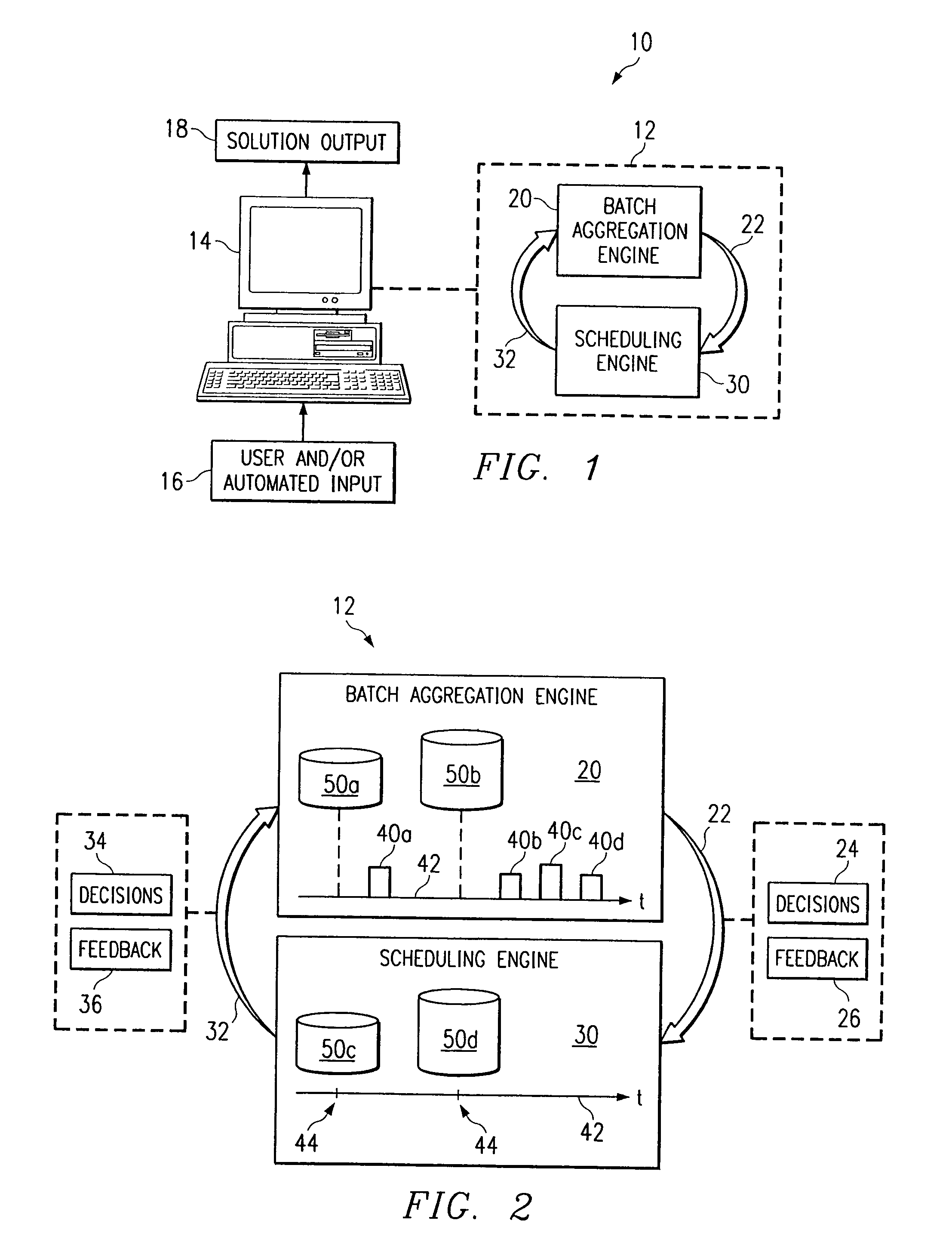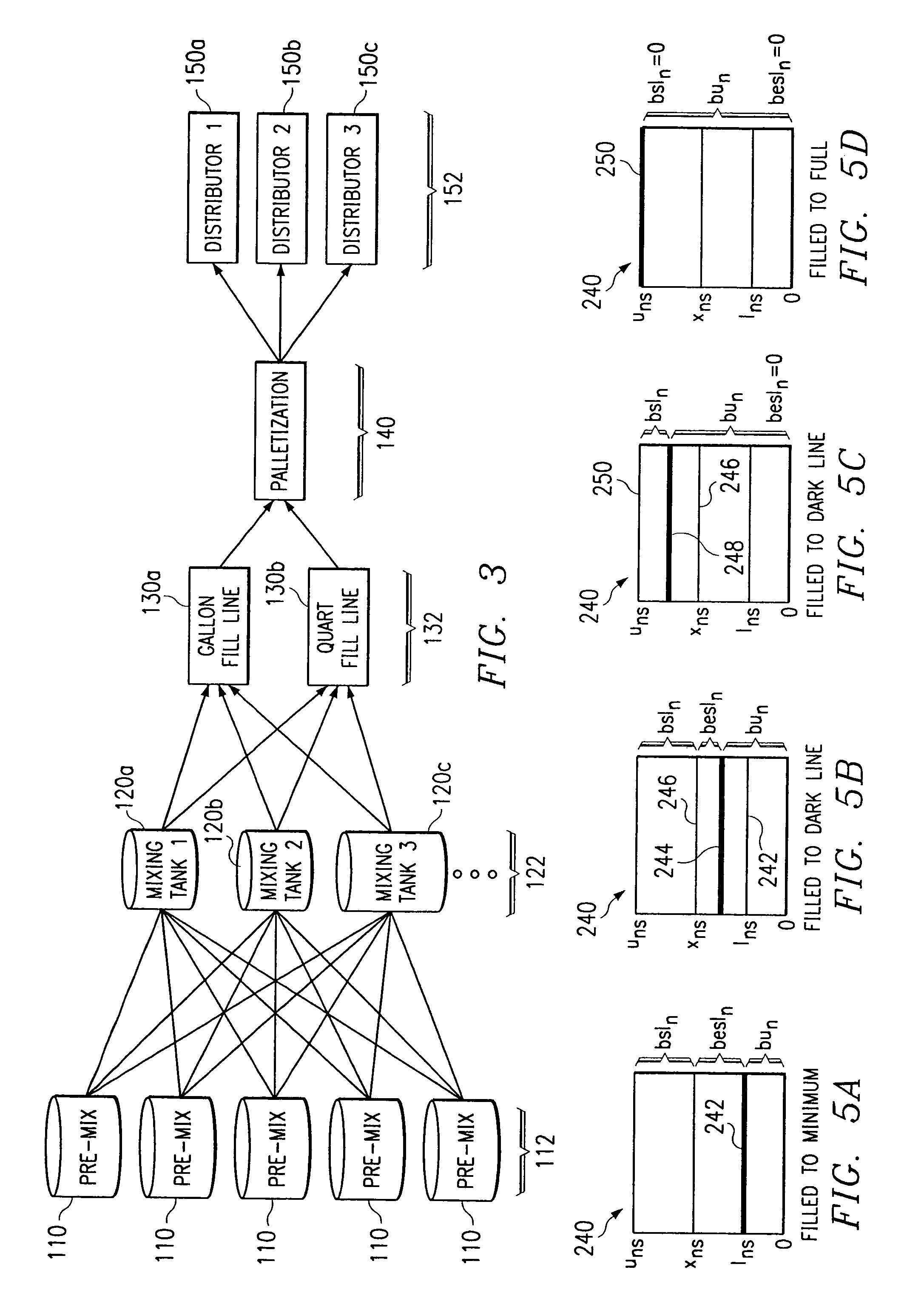Collaborative batch aggregation and scheduling in a manufacturing environment
a manufacturing environment and batch aggregation technology, applied in the field of collaborative batch aggregation and scheduling in a manufacturing environment, can solve the problems of unsatisfactory factory schedules in terms of under-utilized resources, inability to make optimal batching, and inability to handle variable equipment sizes, so as to reduce the quantity of work-in-process, increase factory throughput, and reduce manufacturing costs
- Summary
- Abstract
- Description
- Claims
- Application Information
AI Technical Summary
Benefits of technology
Problems solved by technology
Method used
Image
Examples
Embodiment Construction
[0015]FIG. 1 illustrates an example system 10 that executes a collaborative batch aggregation and scheduling process 12 to optimize the manufacture, packaging, or other handling of a product. The term “product” should be interpreted to encompass any appropriate item or component that might be subject to batch aggregation and scheduling, including any unfinished item or component associated with any stage in a manufacturing, packaging, or other appropriate process. In one embodiment, process 12 involves two engines: a batch aggregation engine 20 and a scheduling engine 30. Batch aggregation engine 20 creates and aggregates product batches according to suitable aggregation criteria described more fully below. All forms of the term “aggregate” should be interpreted to include splitting or dividing a product demand between multiple batches, as well as combining product demands into a batch. In one embodiment, as described more fully below, batch aggregation engine 20 uses mixed-integer ...
PUM
 Login to View More
Login to View More Abstract
Description
Claims
Application Information
 Login to View More
Login to View More - R&D
- Intellectual Property
- Life Sciences
- Materials
- Tech Scout
- Unparalleled Data Quality
- Higher Quality Content
- 60% Fewer Hallucinations
Browse by: Latest US Patents, China's latest patents, Technical Efficacy Thesaurus, Application Domain, Technology Topic, Popular Technical Reports.
© 2025 PatSnap. All rights reserved.Legal|Privacy policy|Modern Slavery Act Transparency Statement|Sitemap|About US| Contact US: help@patsnap.com



